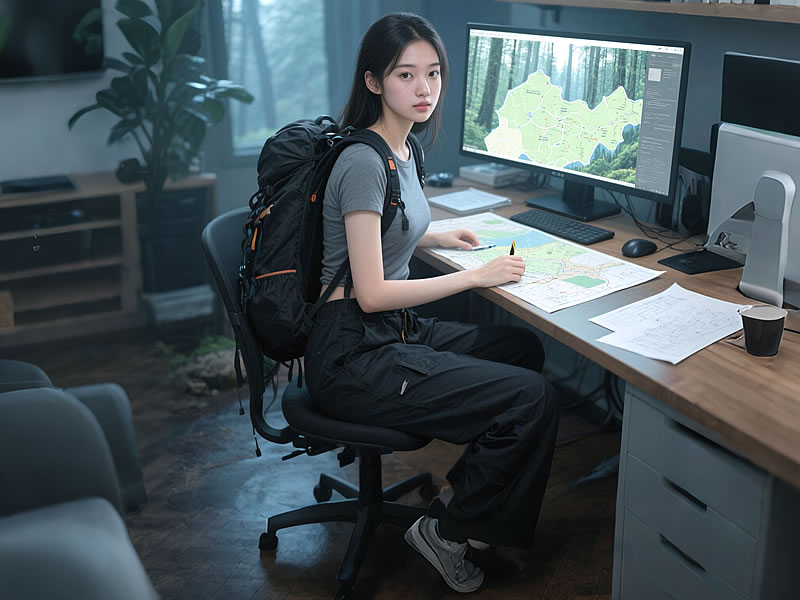How to plan a solo outdoor adventure safely?
Embarking on a solo outdoor adventure offers unparalleled freedom and self-discovery, but safety should always be the top priority. Thorough planning, preparation, and awareness are key to ensuring a secure and enjoyable experience. Here’s a comprehensive guide to help you plan your solo escapade safely.

1. Research Your Destination Extensively
Before setting off, immerse yourself in detailed research about your chosen destination. Study topographical maps, weather forecasts, and trail conditions. Understand potential hazards such as wildlife, unstable terrain, or seasonal risks. Online forums, hiking apps, and local outdoor clubs can provide valuable insights from experienced adventurers. For instance, if you’re planning a solo backpacking trip in the mountains, knowing about snowmelt runoff or avalanche risks during specific seasons is crucial. Additionally, familiarize yourself with local regulations, camping restrictions, and any required permits to avoid legal issues and protect the environment.
2. Share Your Itinerary
Always inform at least one reliable person about your detailed itinerary, including your planned route, expected arrival and departure times at various checkpoints, and emergency contact numbers. Provide them with a map marked with your route and let them know when they should expect to hear from you. Consider using a GPS tracking device or sharing your location via smartphone apps, allowing your contacts to monitor your progress remotely. This way, in case of an emergency, rescuers will have a clear starting point to find you.
3. Assemble the Right Gear
Packing the appropriate gear is essential for a safe solo adventure. Start with the basics: high-quality navigation tools like a map, compass, and a reliable GPS device (with extra batteries or a power bank). A well-stocked first-aid kit, including medications for common ailments, blister treatments, and bandages, is non-negotiable. Ensure you have suitable clothing and footwear for the terrain and weather conditions, including layers for temperature regulation. Don’t forget essential items like a headlamp, multi-tool, water purification system, and enough food supplies. When it comes to camping gear, choose a sturdy tent, sleeping bag, and pad that match the environmental conditions of your destination.
4. Develop Basic Survival Skills
Equip yourself with fundamental survival skills before heading out alone. Learn how to read a map and use a compass without relying solely on technology, as electronics can fail. Practice building a fire, finding and purifying water, and setting up a shelter. Knowing basic first-aid procedures, such as treating cuts, burns, and sprains, can be life-saving. You can take outdoor survival courses or watch educational videos to enhance your skills. Additionally, understanding how to interact safely with wildlife and avoid attracting animals to your campsite is crucial for both your safety and the animals’ well-being.
5. Stay Physically and Mentally Prepared
Solo outdoor adventures can be physically demanding, so it’s important to train your body in advance. Engage in regular exercise, including cardiovascular activities and strength training, to build endurance and strength. If your adventure involves hiking or climbing, practice on similar terrain to acclimate your body. Mentally, prepare yourself for potential challenges and solitude. Develop coping strategies for unexpected situations, such as getting lost or facing bad weather. Stay positive, trust your abilities, and be flexible with your plans.
6. Maintain Communication and Stay Connected
While the allure of solo adventures often includes disconnecting from the digital world, maintaining some level of communication is vital. Carry a fully charged mobile phone with you, but be aware that signal coverage may be limited in remote areas. Consider investing in a satellite phone or a personal locator beacon (PLB), which can send distress signals even without cellular service. Regularly check in with your emergency contacts at prearranged times to let them know you’re safe.
7. Trust Your Instincts and Be Adaptable
Your instincts are your best defense in the outdoors. If a situation feels unsafe or if you encounter unexpected challenges, don’t hesitate to change your plans. It’s better to turn back or modify your route than to push forward into danger. Be flexible and willing to adapt to changing circumstances, such as sudden weather shifts or trail closures. Remember, the goal is to have a safe and enjoyable adventure, not to prove yourself at any cost.
In conclusion, planning a solo outdoor adventure safely requires meticulous preparation, a commitment to learning, and a healthy dose of caution. By following these steps and prioritizing safety at every stage, you can embark on a memorable solo journey with confidence, knowing that you’ve taken the necessary precautions to protect yourself in the great outdoors.






